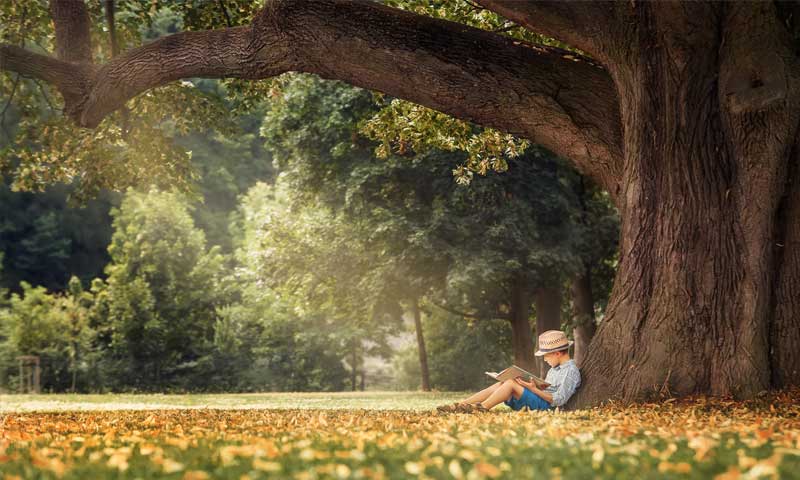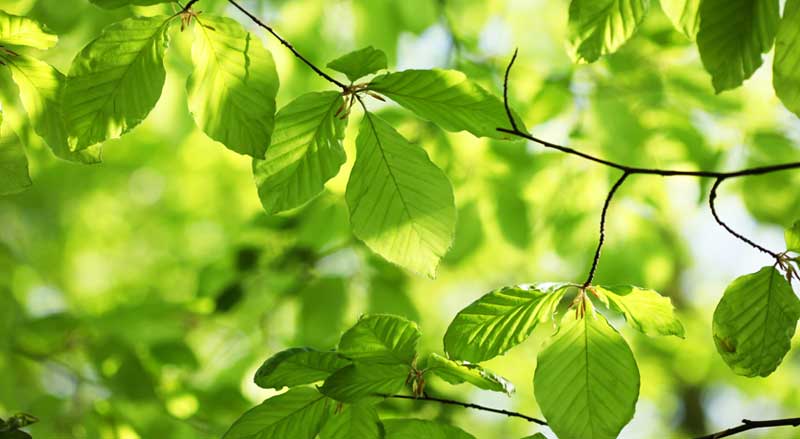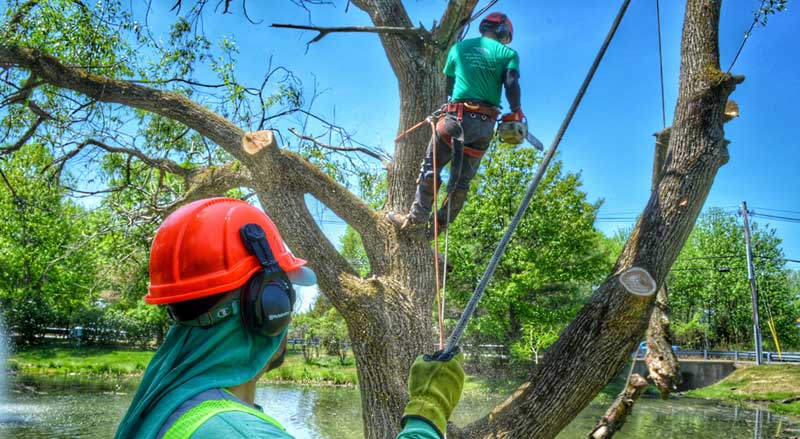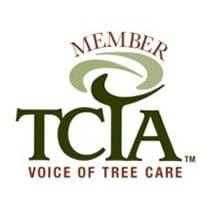We need to keep our valued trees safe in summer. Learn how to protect trees from summer heat and drought.
Nothing’s better in summer than lounging in the shade of your favorite tree, sipping on some ice-cold lemonade, and finally reading that book you purchased months ago.
We all love our trees with their fragrant blossoms and shady boughs. Her are ways to keep them safe.
Summer Problems for New Jersey Trees
Common summer problems facing our trees include:
Water stress
Heat stress
Poor nutrition
Insect pests
Diseases
There are things you can do to prevent these serious problems.

Watering your Trees
If there’s no water available for your tree to take up, it will develop water stress.
Signs of water stress include:
Browning and dry leaf edges
Wilting yellow leaves
Early loss of fruit and leaves
Loss of branches
If you don’t treat water stress quickly, your tree won’t recover. Once damaged leaves and branches reach their “permanent wilting point,” they die. Nothing can save them.
New or young trees are particularly prone to water stress.
Here’s what you need to know about keeping your trees safe.
Watering Tips
Water your trees consistently throughout the summer.
Some important tips are:
- Water trees slowly, so they can absorb as much water as possible.
- Don’t water your trees during the hottest part of the day.
- The best time to water is early morning.
- Don’t over-water your trees. This causes root rot.
- Keep on a consistent schedule.
- If you are watering established trees, moisten the soil to a depth of 10 inches with each watering.
Water Consistently
The species of the trees, and the age of the trees, all affect the best watering schedule for them.
Young trees need daily summer watering; others may only need watering once a week.
Take climate conditions into account.
If you’re going through a heat wave, and you need more water, your trees need more water too!
If you’re going through a rainy spell, cut back on your watering.
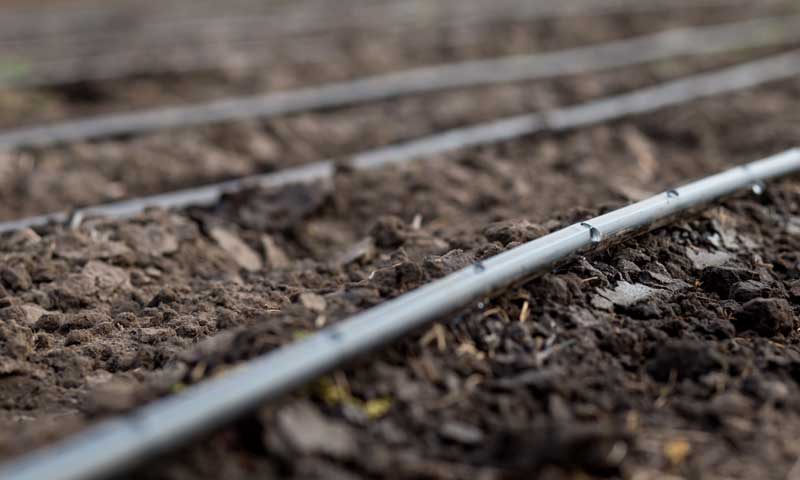
Use Drip Irrigation or Sprinkler Systems
A drip irrigation system is preferable. Bury it in the ground or cover it with mulch.
There are also traditional and smart irrigation systems.
A traditional sprinkler system is set for a specific watering time.
Smart irrigation systems:
Monitor weather
Monitor soil conditions
Monitor evaporation
Monitor tree water use
Then they take all this information and adjust their watering schedules accordingly!
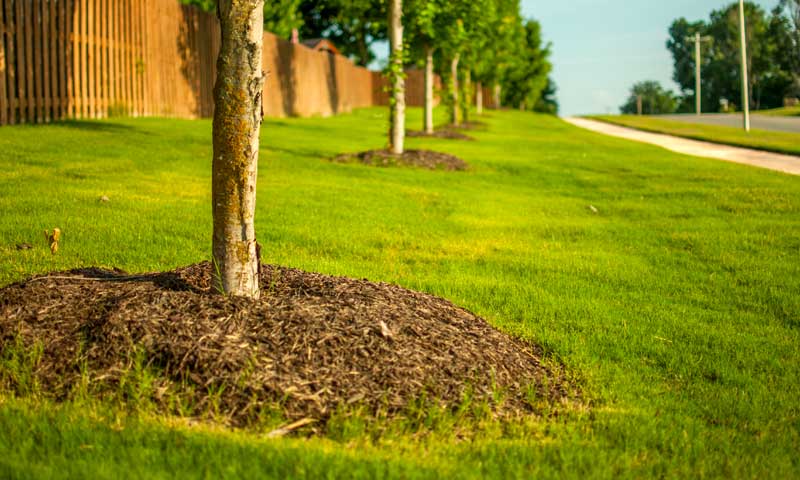
Mulch Around Trees
Trees do better with a bed of mulch around their base.
Not only does mulch make your landscape more attractive—it also helps your trees retain moisture and beat the summer heat. Mulch moderates soil temperatures and keeps roots comfortably cool.
Young trees have delicate root systems and particularly benefit from mulch.
Different Types of Mulch
Organic mulch is a popular choice. It eventually breaks down and enriches the soil, so replenish it at the start of summer.
Crushed or rounded rocks can be good mulch. But beware — rocks absorb and hold the sun’s heat. This damages delicate tree roots. Only use rock mulch on more mature trees that aren’t exposed to full sun.
Try a Layer of Compost
Some people add a layer of compost before mulching. The tree slowly absorbs the nutrients in compost once the compost breaks down.
Laying Down Mulch
Before laying down mulch, water your tree well.
Now you are ready to mulch.
Create an attractive 2-inch-deep circle of mulch around each tree. Make the circle between 2 and 3 feet in diameter.
Be sure the mulch doesn’t touch the tree bark; leave a small space. This keeps moisture from building and prevents tree rot. It will also keep insects that are attracted to the mulch, from infesting your tree.
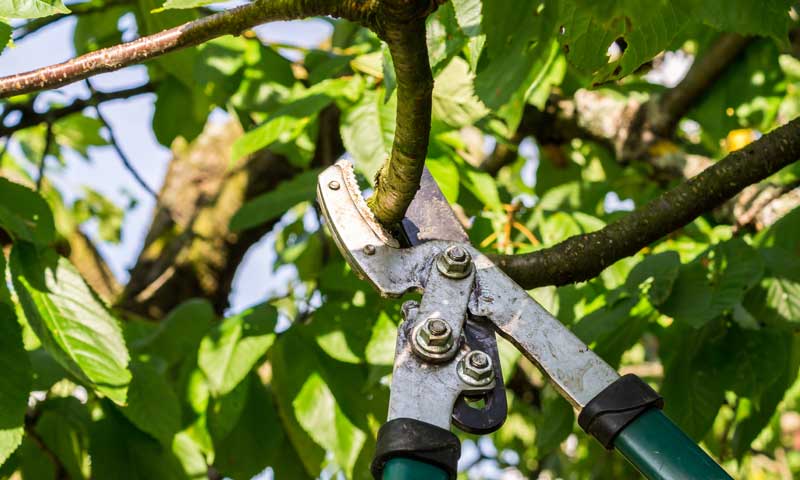
Pruning Your Trees
Pruning your trees is essential. But there’s a best time to do this. And it’s not during the summer.
Pruning stresses trees. Contact a tree expert who has the skill and knowledge to do this safely.
In the heat of summer, only prune branches that are dead, diseased, or damaged.
These branches can be dangerous during summer storms. You don’t want a weakened tree branch breaking off and falling on your house, car, or worse!
If you must prune, add some extra fertilizer and watering afterwards. This TLC will help your tree remain healthy.
Tree Fertilization
The healthier the soil, the healthier the tree. This is why fertilizer is so important.
A healthy tree is more successful at fighting off the damaging effects of summer heat and drought.
There’s no universal rule as to when and how much to fertilize. You will do best to get the help of a professional tree service.
If you must, do your research and fertilize using trial and error.
Some trees do best when fertilized before the summer heat starts. Still others enjoy being fertilized throughout the long summer.
If your tree is showing any signs of water-or heat-stress, don’t apply high-nitrogen fertilizer. This fertilizer stimulates new leaf growth that an already stressed tree can’t support.
Here’s an important post about the tree disease, chlorosis. It’s often caused by poor tree nutrition.
Heat Stressed Trees
Despite your best efforts, your tree may suffer from heat stress. Heat stress isn’t just a passing problem. It can have long-term consequences for your tree, but trees can recover.
Extreme heat, as well as drought conditions will bring on and worsen heat stress.
Symptoms of heat stress are like those of water stress (listed above).
To help save a heat-stressed tree, add 2-4 inches of mulch. Then check the moisture in the soil and water as soon as possible.
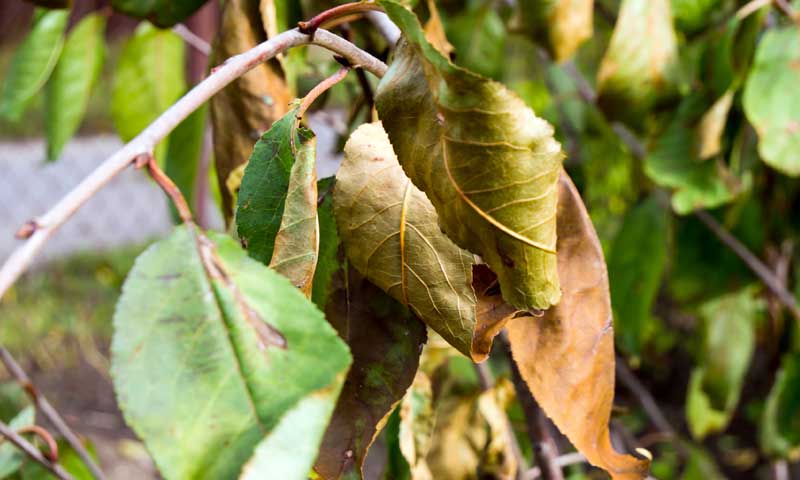
Insect Pests and Disease
Treat insect pests and disease at the first sign of trouble.
Watch for these common warning signs:
Holes in leaves, yellowing leaves, or crispy brown leaves
Prematurely falling leaves
Spotted or blotchy leaves
Oozing branches or trunks
Here are some informative posts on insect pests and tree diseases:
- Help! Why Is My Tree Shedding Its Bark?
- Warning Signs and Prevention of Tree Termite Infestation
- How to Identify and Get Rid of the Spotted Lanternfly
- How to Identify and Combat an Aphid Infestation
- How Do I Recognize When a Tree Is Sick?
If you are concerned about your trees during this hot summer, contact us at Trees Unlimited for superior summer tree care.

